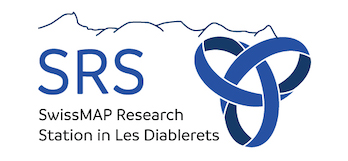Symmetric orbifolds are 2d CFTs with universal properties in the large N limit, mimicking many desired properties of holographic CFTs. In particular, the thermal partition function is universal and agrees with that of 3D gravity. I will present some new results for the universality of symmetric orbiflds: the thermal correlation functions at large N agree with those on the BTZ background. Along...
I describe a simple microscopic quantum mechanical model of low-dimensional de Sitter holography with an observer. Using semiclassical gravity and elementary thermodynamic considerations, I’ll derive a formula for the total entropy of a 3D de Sitter universe with an observer. I then show that this entropy formula exactly matches the known spectral density of the double scaled SYK model.
In recent years, it has become clear that the path integral of semiclassical 3D gravity offers a "coarse-grained" description of its holographic 2D CFT. This relationship is particularly transparent when considering the statistical moments of operator product expansion (OPE) coefficients in the CFT. In this talk, I will explore the statistical properties of OPE coefficients through the...
We will discuss the emergence of Stringy spacetime from the chaos in modular flow of future algebras.
We will discuss the modular ergodic hierarchy, and prove a sufficient condition for the emergence of Stringy AdS_2 from modular intersections.
There has been much recent interest in the necessity to include an observer degree of freedom in the description of local algebras in semiclassical gravity. In this talk, I will describe an example where the observer can be constructed intrinsically from the quantum fields. This construction involves the slow-roll inflation example recently analyzed by Chen and Penington, in which the...
Over 50 years ago, 't Hooft observed the similarity between the Feynman diagram expansion of a large N gauge theory and the topological expansion of a string theory. The purpose of this talk is to make this idea precise for a protected subsector of the AdS/CFT correspondence. Concretely, we show how the Feynman diagram expansion of correlation functions in N=4 SYM preserving half the...
I will explain the implementation of a bootstrap method that combines Schwinger-Dyson equations, thermal inequalities, and semidefinite relaxations of matrix logarithm in the ungauged one-matrix quantum mechanics, at finite rank N as well as in the large N limit, to determine finite temperature observables. I will show plots of these observables (determined using the bootstrap) that...

